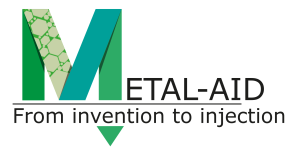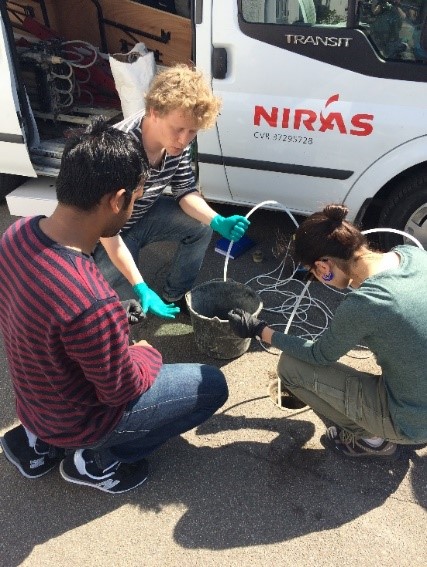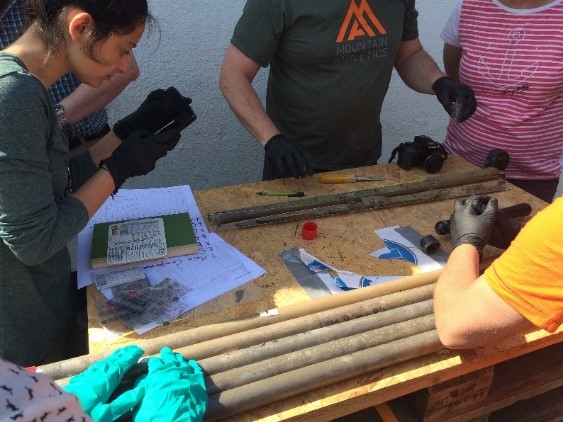Mobility and Reactivity of Green Rust in Porous Media
- Supervisor:
Prof. Dr. T. Neumann, Dr. T. Held (Arcadis)
- Person in Charge:Flavia Digiacomo
Flavia Digiacomo is a PhD student at Arcadis Germany GmbH who is conducting her thesis in collaboration with the AGW Institute at KIT. Her thesis is part of the Metal-Aid project: “Metal oxide aided subsurface remediation: from invention to injection” (http://nanogeoscience.dk/metalaid/ ![]() ) which aims to develop an innovative and eco-friendly in situ technology based on the green rust minerals for remediating groundwater and soil contaminated by heavy metals and chlorinated compounds. In the last decades, large efforts have been made to decontaminate the polluted sites using the most common remediation methods (i.e. excavating soil, pumping contaminated groundwater and treating). However, only a tiny percentage of these sites have been cleaned up so far. Innovative and effective strategies are therefore strongly required. Flavia Digiacomo is focused on investigating the reactivity and transport behavior of green rusts as soon as they are injected into a porous medium. To achieve these goals, she performs column experiments which are the best tools to represent natural porous system in the laboratory scale. By combining water sample analysis (UV-Vis spectrophotometry, ICP-OES) with solid state characterization methods (XRD, SEM and XPS), the parameters influencing the reactivity and the transportability of the green rust reactants in porous media will be evaluated. Knowing the behavior of the green rust reactants within a porous matrix as well as assessing their fate is the key to applying such a technique in the field.
) which aims to develop an innovative and eco-friendly in situ technology based on the green rust minerals for remediating groundwater and soil contaminated by heavy metals and chlorinated compounds. In the last decades, large efforts have been made to decontaminate the polluted sites using the most common remediation methods (i.e. excavating soil, pumping contaminated groundwater and treating). However, only a tiny percentage of these sites have been cleaned up so far. Innovative and effective strategies are therefore strongly required. Flavia Digiacomo is focused on investigating the reactivity and transport behavior of green rusts as soon as they are injected into a porous medium. To achieve these goals, she performs column experiments which are the best tools to represent natural porous system in the laboratory scale. By combining water sample analysis (UV-Vis spectrophotometry, ICP-OES) with solid state characterization methods (XRD, SEM and XPS), the parameters influencing the reactivity and the transportability of the green rust reactants in porous media will be evaluated. Knowing the behavior of the green rust reactants within a porous matrix as well as assessing their fate is the key to applying such a technique in the field.



